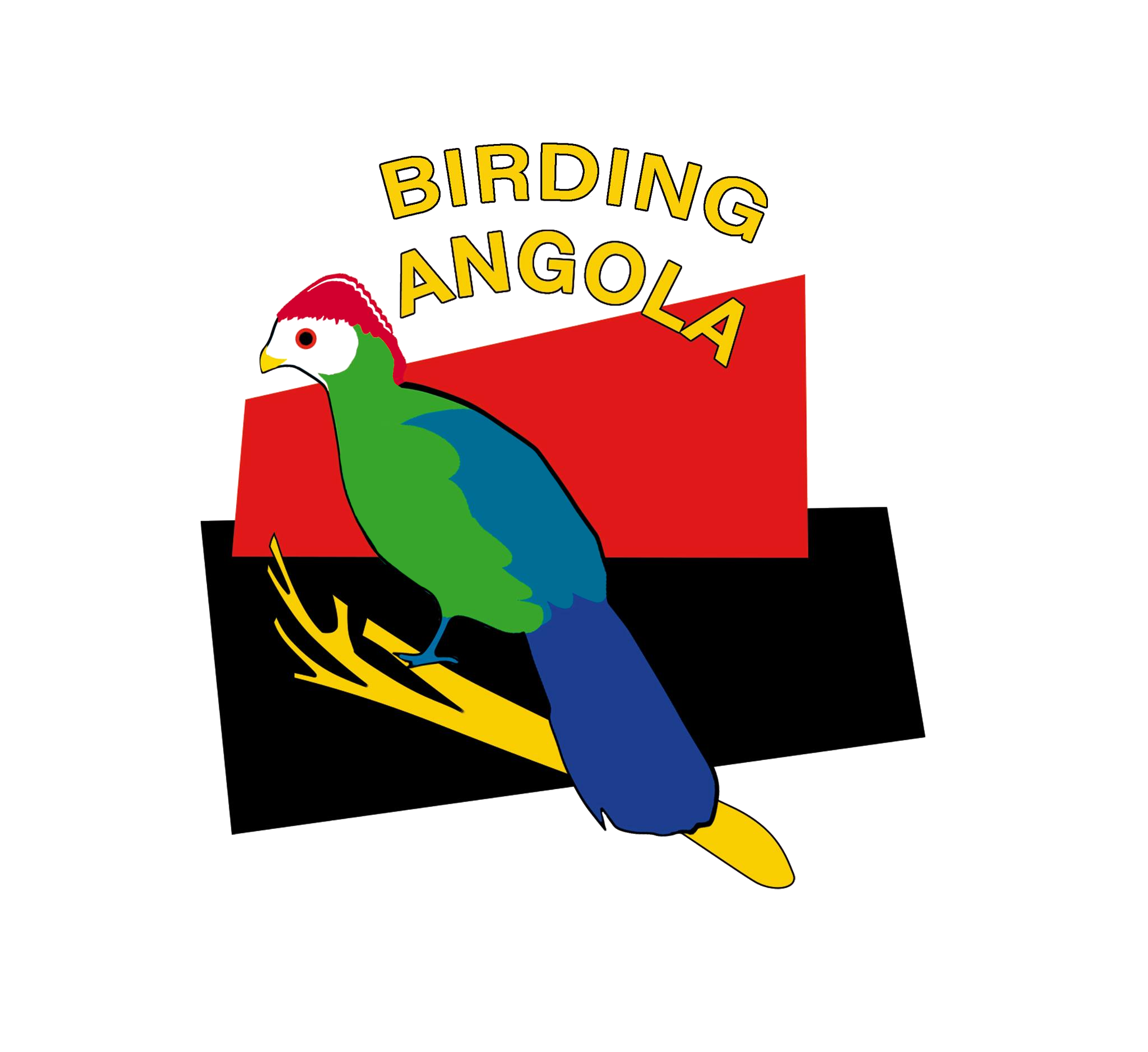The Wildlife Habitats of Angola
MONTANE FOREST
Lush forest that can be found at higher elevations. Shorter, and often more draped in moss and epiphytes than lowland rainforest.
This is one of Angola’s richest habitats for endemic birds, including Red-crested Turaco, Bocage’s Akalat, and Monteiro’s Bushshrike.
On the Birding Route, this habitat can be seen at Kumbira, Morro de Moco, and Tundavala.
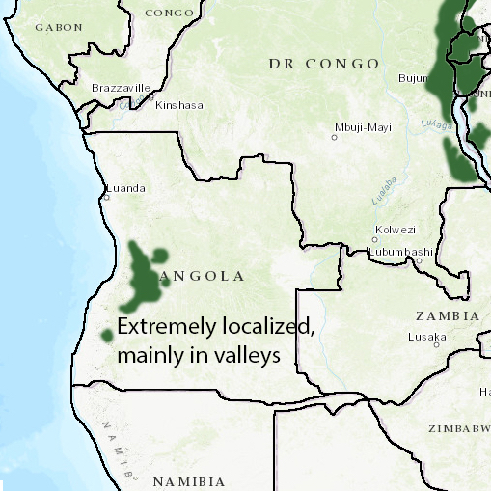
RAINFOREST
Lush forest that can be found from sea level up to moderate elevations. Receives rainfall year-round, though there are short dry seasons. Can be very tall, and usually taller than Montane Forest.
This is one of Angola’s biologically richest habitats overall. It supports a couple endemics like Braun’s Bushshrike, and some localized special birds such as Woodhouse’s Antpecker, Gabon Coucal, and White-collared Oliveback.
On the Birding Route, this habitat can be seen at Damengola and Tombinga .
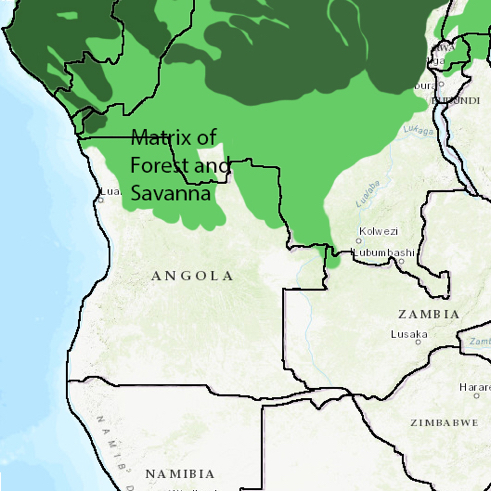
SWAMP FOREST
This habitat is similar to Lowland Rainforest, but is flooded for at least part of the year. It’s a very localized habitat in Angola, occurring in the northern enclave of Cabinda.
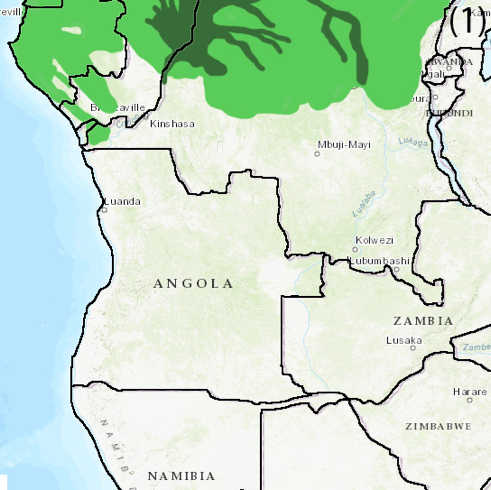
DRY THORN SAVANNA
Dry and thorny habitat with lots of open ground where grass grows after good rains. Dominated by acacia, commiphora, and other spiny trees.
This is an important habitat for localized birds of southwest Africa, such as Cinderella Waxbill, White-tailed Shrike, and Rockrunner.
On the Birding Route, this habitat can be seen at Mangueiras and Benguela.
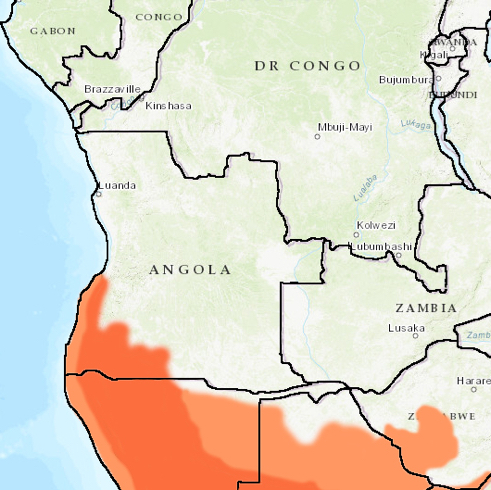
MIOMBO
Lush savanna habitat consisting of tall broadleaf trees. One of the characteristic trees is the Brachystegia or “Miombo” tree.
Although Miombo is widespread in south / central Africa, it is a habitat that many traveling birders have never visited, and holds a rich set of habitat-endemic birds. These include Anchieta’s Barbet, Broad-tailed Paradise-Whydah, Anchieta’s Sunbird, and Miombo Rock-Thrush.
On the Birding Route, this habitat can be seen at Morro de Moco and Kinjila.
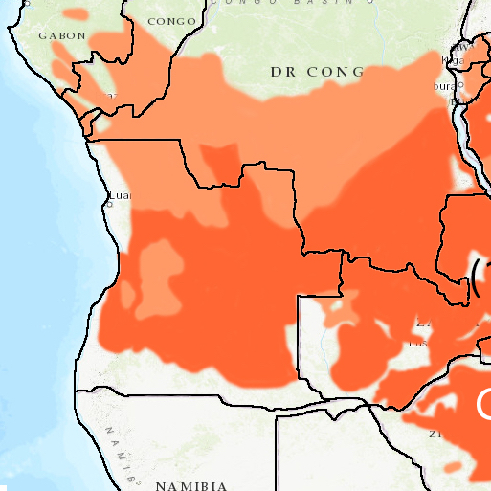
MOPANE
Unusual savanna habitat that is dominated by a single broadleaf tree species: the Mopane Tree.
This is an important habitat for several localized birds of southwest Africa, including Damara Red-billed Hornbill and Bare-cheeked Babbler.
On the Birding Route, this habitat can be seen at Tundavala and Benguela.
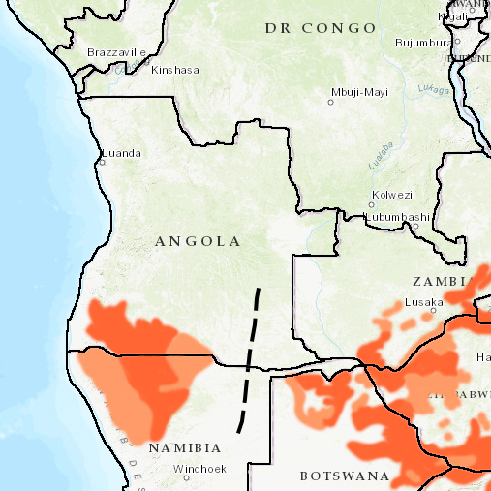
MOIST MIXED SAVANNA
Complex and highly variable type of savanna. Includes both broadleaf trees and thorny species like Acacia. Massive Baobabs are often prominent.
This is an important habitat for several Angolan endemics, including Gray-striped Francolin, White-fronted Wattle-eye, Hartert’s Camaroptera, and Red-backed Mousebird.
On the Birding Route, this habitat can be seen at Kissama NP, Santa Amboleia, and Mangueiras.
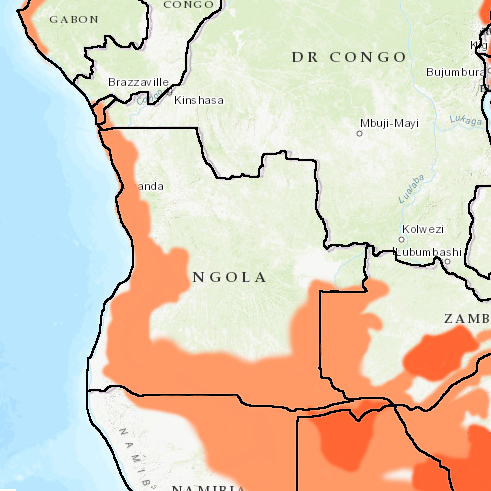
TROPICAL GRASSLAND
Grass-dominated habitat found locally at lower elevations throughout most of Angola.
This is the habitat of the Angolan endemic Golden-backed Weaver, and a variety of other birds such as Fan-tailed Grassbird and a diverse range of cisticolas.
On the Birding Route, this habitat can be seen at Kissama NP and Kinjila.
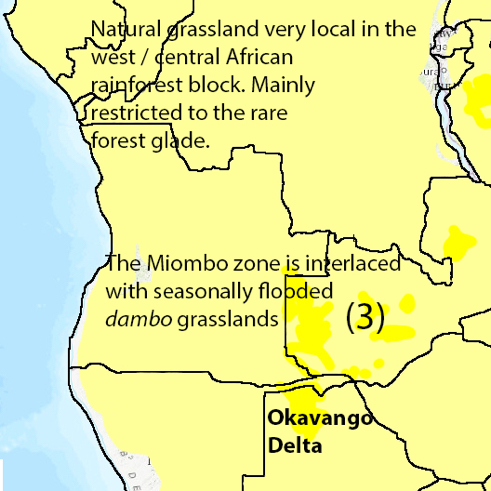
MONTANE GRASSLAND
Grass-dominated habitat found widely at higher elevations in the mountains of west / central Angola. Frequent human-caused fires have allowed this habitat to expand at the expense of Montane Forest.
This is an important habitat in the mix of habitats used by a few endemic and near-endemic birds, namely Swiestra’s Francolin, Huambo Cisticola, and Bocage’s Weaver,
On the Birding Route, this habitat can be seen at Tundavala and Morro de Moco.
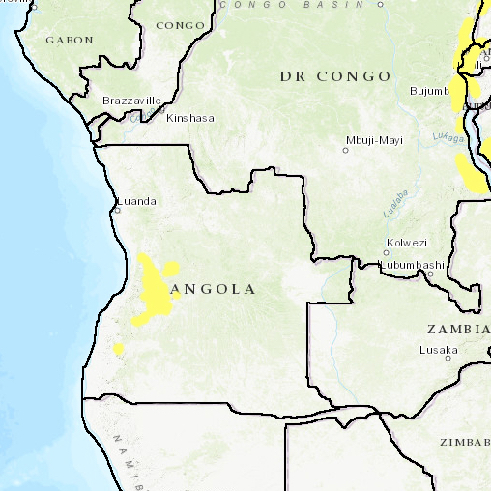
DESERT
Very dry and sparsely vegetated habitat. Includes both gravel plains and fields of sand dunes.
This is the habitat of several localized southwest African species, including Rüppell’s Bustard, Gray’s Lark, and Stark’s Lark.
On the Birding Route, this habitat can be seen to the west of Magueiras.
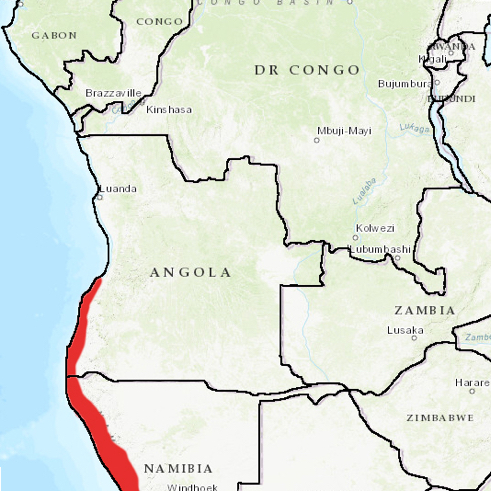
MANGROVE
A very specialized type of forest consisting of trees that can tolerate frequent immersion in salt water.
In Africa, this is a surprisingly poor habitat, that supports very few bird species.
This habitat can be seen near Luanda.
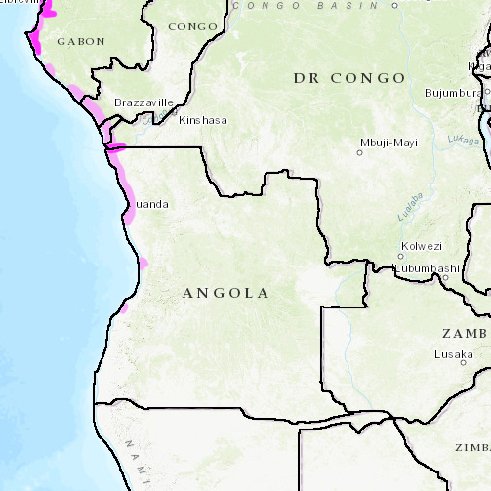
GUSU
A localized habitat of southwestern Africa. This savanna dominated by broadleaf trees is similar to Miombo, though drier and biologically poorer. It is dominated by the Gusu or Zambezi Teak tree.
This is the primary habitat of the localized Bradfield’s Hornbill.
Remarkably, this is the only major Angolan wildlife habitat that cannot be seen on the Birding Route!
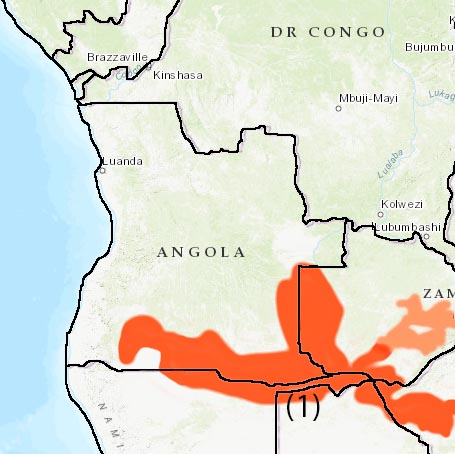
Habitat maps courtesy of “Guide to Wildlife Habitats of the World”, which will be published by Princeton University Press in 2021.
Darker coloration means that the habitat is the predominant habitat, or one of the predominant habitats in an area.
Paler coloration means that the habitat is found locally, but is not the predominant habitat.
